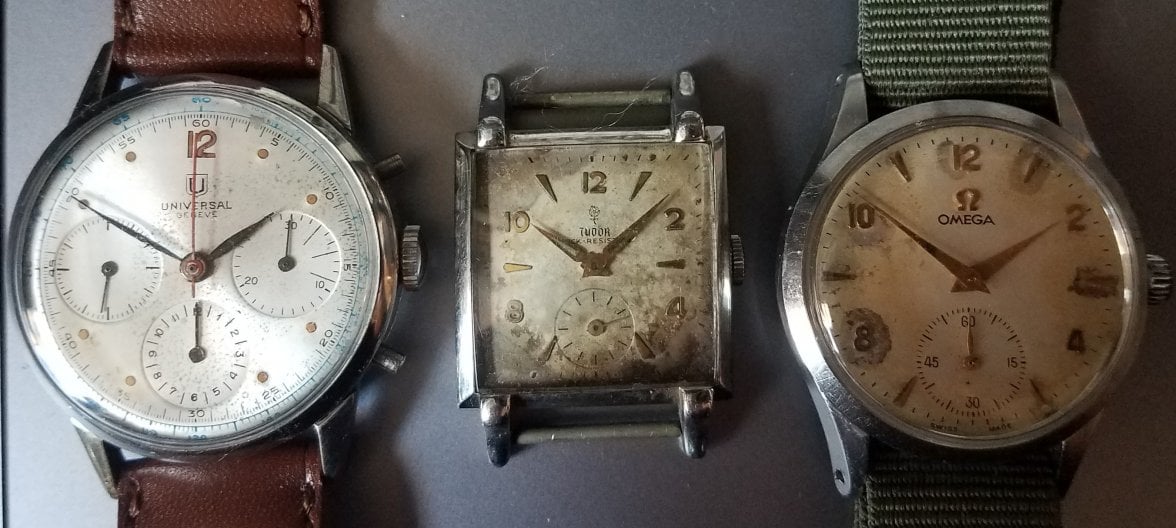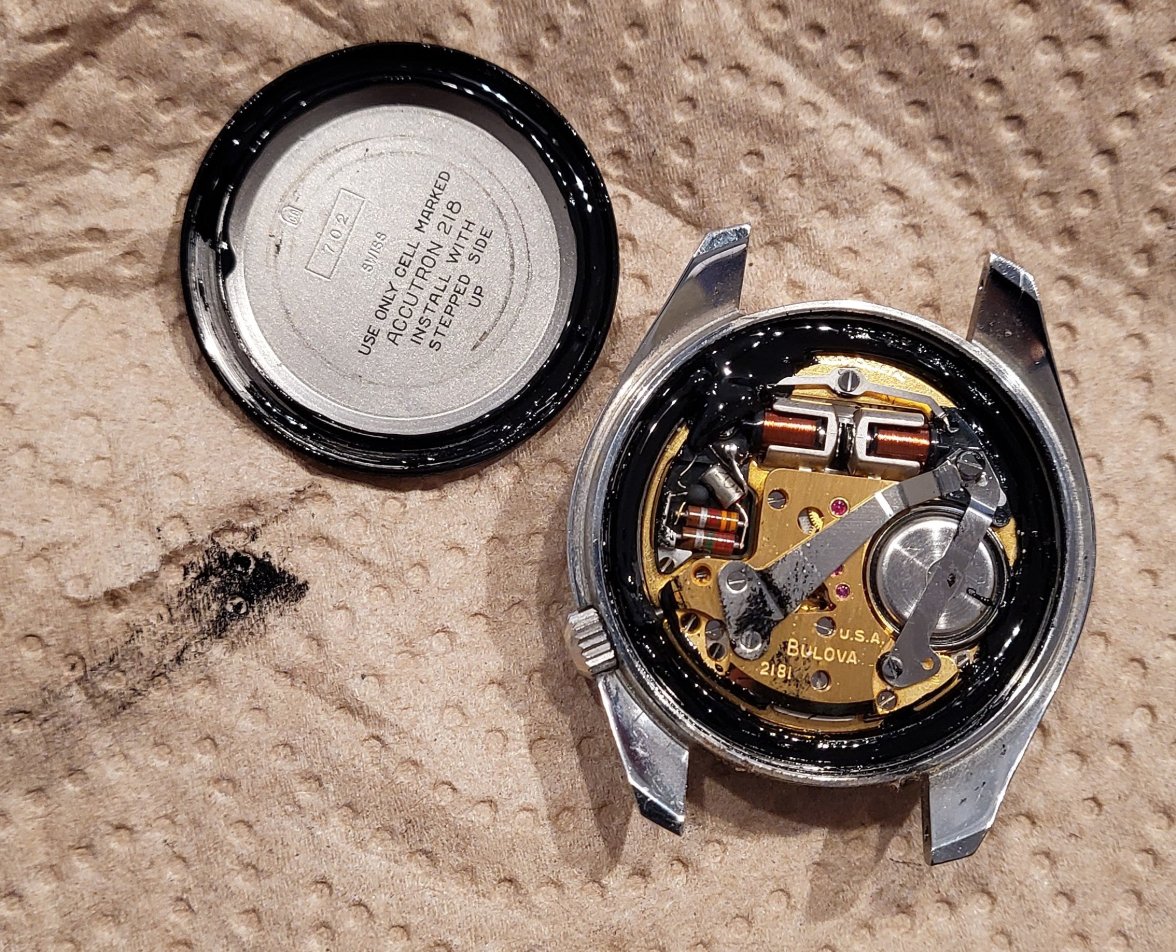I wanted to pass on some things that I thought may help the people on here that are trying their hand at some watchmaking. I hope to post a few threads on specific topics as time permits, and what I’d like to do is keep each thread as much on one topic as possible so the information doesn’t jump around too much. My hope is that these threads can act as a reference for those who have questions in the future also. My goal here is to pass on tips and techniques that I have found useful in my time at the bench.
A lot of watchmaking is “the devil is in the details” and although topics and technical issues can get quite esoteric at times, it’s the basics that largely determine if your work is successful day in and day out. That’s why I’m starting with the most basic thing there is - cleaning and cleanliness in general. My instructor used to repeat certain things over and over, and he did so for a reason - they are important to your success. Two of those things I keep in mind every day I sit down at my bench:
1 - "
The watch you are working on is only as clean as your bench is." It appears so basic and obvious it almost seems not worth saying, but the number of photos I see of benches that are completely filthy with watches being worked on them would tell me that some don’t really take this to heart. So before you start your day, take a clean and lint free rag, splash some 99% alcohol on it, and wipe down your bench - don’t forget your task light, because if it’s dusty every time you reach up to adjust it, dust will fall down onto the work area.
I (try) to clear off my bench of tools and clutter every night before I finish for the day, so the next morning the bench is uncluttered and all I have to do is wipe it down and I’m ready to start work for the day. I do admit that on occasion I have worked late enough that I leave it, but that’s is the exception. It is amazing how quickly the bench can become cluttered, so keeping on top of it is a good idea.
2 - "
The watch will never be cleaner than it is when it comes out of the cleaning machine." So when it comes out of the cleaner it’s your job not to contaminate it as you work. This is why I wear finger cots - I see so many photos of watchmakers handling part with bare fingers and it makes me cringe every time. Now finger cots are not 100% necessary and in fact my instructor did not wear them, but he never touched any watch part with his bare fingers - he was able to manipulate everything with tweezers.
I see videos where people take a huge wad of Rodico they have sitting on their bench and they touch it to the movement over and over - all this does is make the watch movement dirty again. As I’ve said before Rodico and similar products are not allowed by many brands, as they do tend to spread contaminants around the movement. I don’t use One-Dip at my bench, because not only is it unhealthy, but unless you change the solution after every part you dip in it, over time it becomes contaminated. For me, if I get a part dirty at the bench somehow, it goes back into the cleaning machine.
So with those two key thoughts out of the way, and since I just mentioned cleaning machines, I’ve received questions via PM from several members in the past regarding how to clean without a fancy machine, and what kind of cleaning solutions to use. You will find many home made solution recipes out there, but one thing to keep in mind is the purity level of the base components. Often the cleanliness standards for bulk stocks of chemicals are not the same as solutions made specifically for cleaning watches, so even if you use all the same chemicals in the same ratios, the end result may not be as good. I personally use L&R brand cleaning solutions, and I have tried other brands also, such a Zenith, but I always comes back to the L&R as I find them to be the most effective.
So no matter if you have an automated machine or not, typically you use a number of containers for cleaning. So for example if you have just a bath style ultrasonic tank (like what I use for cleaning cases and bracelets) you would use that for cleaning watches by filling the tank with water, and using jars of cleaning solution that would sit in the water, rather than filling the tank itself with cleaning solutions. As a minimum, 3 jars are needed, and these are the three jars from my automated machine:

These are due for a change, so the jar on the far right is the actual cleaning solution - L&R Extra Fine cleaning solution. It is solvent based and includes ammonia for the cleaning action - the smell is strong so as always proper ventilation is required when using these chemicals. The other 2 jars are rise solutions, and both contain L&R rinse - a clear, colourless solution when new. When you change cleaning solutions, you change 2 of the three jars typically, so the cleaning solution in jar 1 is changed with new solution, then jar 3 moves to jar 2 as the first rinse (solution is not changed), and then the rinse in jar 2 is changed to new solution and becomes the final rinse in jar 3 - here they are after the change:

The new cleaning solution and new final rinse ensure that the movement parts come out clean. My machine has an automated spin off of excess solutions between jars, and at the end a heating element is used while spinning the baskets to dry the parts thoroughly. If you are using a tank machine then you should try your best to accomplish the same things, so removing as much excess fluids from your parts between jars will prolong the life of your cleaning solutions (less contamination carried from jar to jar), and drying with warm moving air will help ensure that parts are dried properly.
Now with regards to how long to run whatever machine you have, that really depends on the strength of the ultrasonics you have, so this may require some experimentation on your part to find the timing that gets you the cleanest parts without risking damage. Typically modern automatic machines use cycles of around 3 minutes for each jar, although I can increase the time for the first jar to as much as 15 minutes on my machine.
Another thing to consider is creating a log for the cleaning machine - I keep mine right beside the machine. It has the date of the last solution changes, and when I run a movement through the machine I mark an X on the chart, and this helps me keep track of how many movements I’ve cleaned since the last change. If I clean a particularly dirty watch, I may mark down 2 X’s just to reflect that the level of contamination was particularly large. In order to save on solution changes, I will sometimes leave a really dirty movement until just before the change, and clean it then, change the solutions, and give a second run through the machine. I don’t have hard and fast rules here, so again it takes some experience to know how many movements you can clean before the solutions need changing. Of course the final arbiter of this is the movements themselves - if they are not coming out clean, then looking at your solutions is the first step. Please note that you should follow all your local rules pertaining to disposal of these solutions.
Last items for this post are some steps taken before the cleaning machine. Watchmakers use some rather simple and very traditional tools in their work, and two of those are peg wood and pith wood. Peg wood is basically a small diameter stick of fairly soft wood that is used for cleaning jewels. It is typically purchased in bundles from a watch material supply house, and although it seems pretty obvious, I’ve seen people use it in a way that doesn’t make it as effective as it could be. The first thing is the material selected - I sometimes read that people use those round and rather hard toothpicks, and those are actually a bit too hard to be used as peg wood is intended to be for jewels. It’s not that it would damage the jewel, but I’ll show you what I mean shortly. The other thing about peg wood is how it’s sharpened, and I’ve seen references to people using a pencil sharpener for these. Here is how I sharpen my peg wood:

Clearly done with a knife, and I have an Exacto knife at the bench for this. The style of sharpening is intentional, as I don’t really want a round profile, but more of a triangular cross section. Three quick pulls with the knife and the peg wood is ready to use. The shape helps to scrape debris for the inside diameter of the jewel hole, so that’s why that cross section is typical. In terms of the hardness, this is what the peg wood looks like after cleaning a jewel:

You can see that the wood has been extruded through the jewel hole, and this ensures that every part of the hole has been scraped. A piece of wood that is too hard will not work as well for this. Now I have pegged both before and after cleaning, and have finally settled on doing my pegging of the jewels before putting the parts in the cleaning machine. There are times when I have to peg after cleaning in situations where the jewels are really caked with dirt. Note that you should use some care when pressing on jewels, as it is possible to press them out sometimes when pressing too hard.
Pith wood is typically made of elder pith, and is a soft wood that is used for cleaning things. I will often push the pivots of wheels into pith wood to clean them before putting them through the cleaning machine, and I regularly use pith wood for holding the pallet fork while applying epilame treatment to the stones:

Good pith wood seems to be difficult to find these days, but ideally it should not crumble on you or leave a lot of residue/dust behind on the parts. The same with peg wood - the better material does not flake and crumble as easily as the cheaper stuff does.
The last tip for this post is to demagnetize before cleaning the movement parts:

The reason you do this is pretty simple - even if the watch is not magnetized to the point where it causes running problems from the coils of the balance spring sticking together, the parts can still attract ferrous debris if you don’t demagnetize - this escape wheel is fresh out of the cleaning machine after I forgot to demag it, and you can see why I demagnetized and cleaned it all again:

Hope you find some of this helpful, and again these don’t seem earth shattering, but are the foundation for good work and good results.
I’ll address some post-cleaning items in the next installment to this thread.
Cheers, Al









